Most of these pre term pregnancies occur in African American or Latin American women from low income groups. Our client, a health insurance company, was planning a pilot in this space to reduce preterm deliveries among vulnerable populations, & had asked us to conduct a research study to gauge the effectiveness of the proposed intervention.

I worked with the rest of the team to plan and conduct the research, and analyze the results to
generate insights and opportunity areas. I also contributed to secondary research, recruiting and
interviewing subject-matter experts, and presenting our findings to our clients.
My core responsibilities were to design the remote research experience, implement it, support the
participants during the study, and provide our team with the data received
during it.
This study occured in February 2020, right before the Covid-19 pandemic hit the world, and
learnings from this project helped during numerous design research projects that I have been
part of after this one.
I am unable to share findings of this study due to non-disclosure agreements I am required to comply with, and would instead prefer to take this opportunity to tell you about the remote research methods we had to use for participants who lived in Virginia and Texas. For the remote research piece, we experimented with various tools which were available on the internet to conduct research, while ensuring participant comfort with technology.
After conducting secondary research and interviewing subject matter experts and client-side stakeholders, we contracted a recruiting agency to search for research participants- women from a range of socio-economic backgrounds who were either predisposed towards pre-term labour, or had medical history of a premature delivery. Our research participant sample set was spread across three different states in the United States- Illinois, Texas, and Virginia, to accommodate states with historically higher rates of pre-term labour and related complications.

Our goal was to understand the daily lives of the participants- their schedules,
habits, family life, medical history, healthcare related experiences, things which made them feel
empowered, and barriers or challenges towards taking care of themselves. To understand the frequency
of their habits and actions, we decided to use an activity based card sort to accompany a
semi-structured in-person interview for the research participants in Illinois.
It wasn't possible for us to travel to the participants' locations in Texas and Virginia due to
budget and timeline constraints, but we still needed a comprehensive understanding of their health
actions, habits and lives.
The question in front of us was- how do we get in-depth, high quality information from
people we couldn't meet?
We decided to try remote interviews with an online whiteboard based card sort, with a
digital diary study, and a form based survey to cover any more questions we may have
towards the end of the study.


The first thing we tried was using online whiteboards like Miro and Mural for the card sort. Here's an example we built on Miro (left) and tested out on the android app (right).
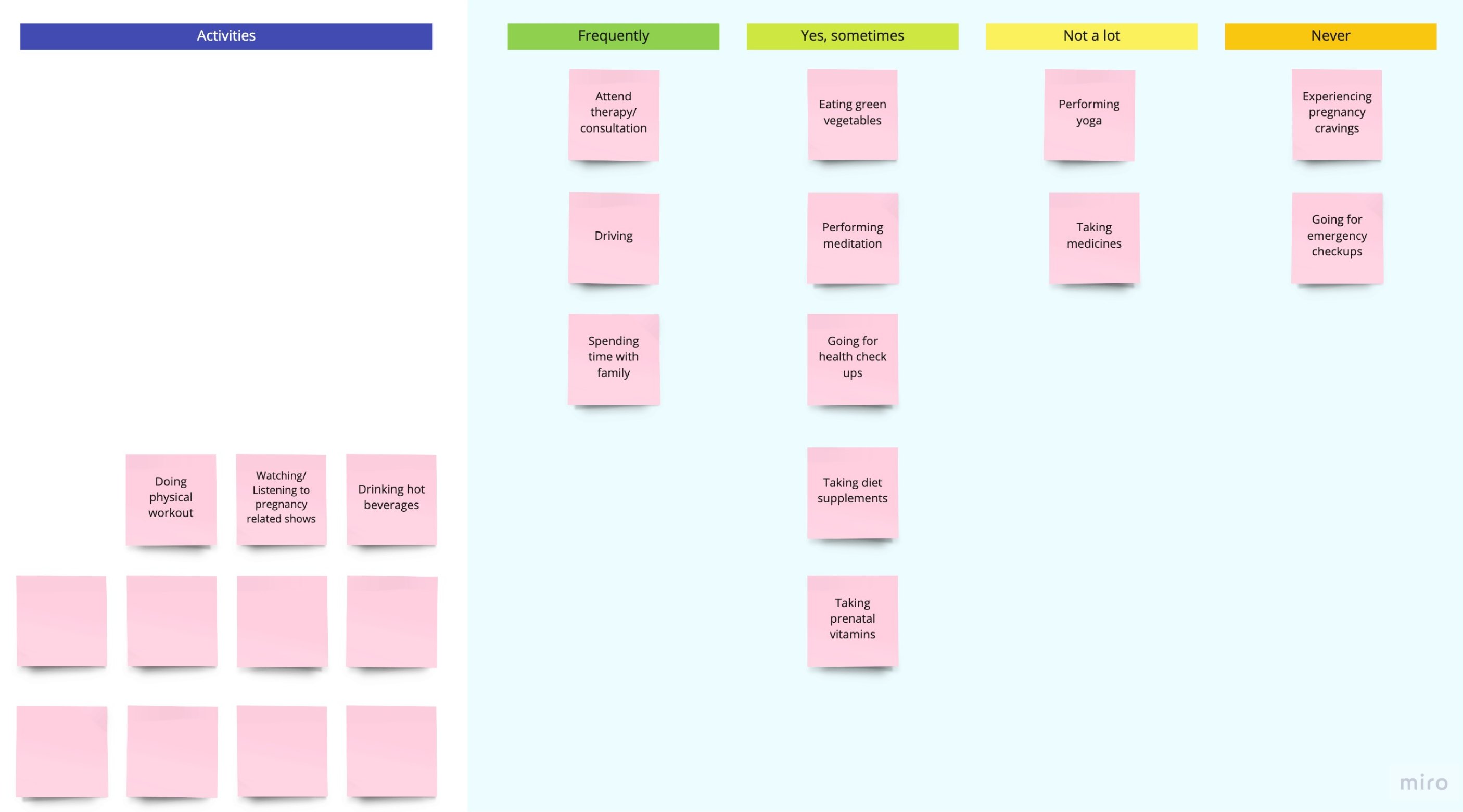
Card-sort example on Miro
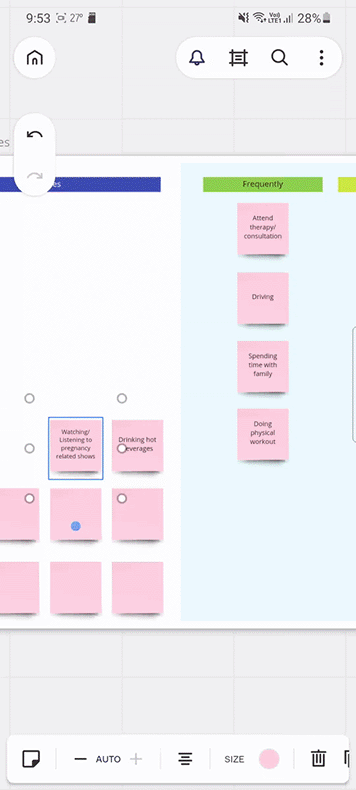
Testing on mobile devices
What we realised was that using the mobile app for this exercise was vexing due to the small screen
size
of mobile phones. Additionally, most participants did not have laptops or personal computers,
and
would have needed to install the respective whiteboard app on their phones to participate in the
study-
something our recruiter told us the participants were not comfortable doing. We also tried to
conduct the phone interviews amongst ourselves while parallely using the whiteboard app, and
observed
technical glitches like dropped calls and frozen screens especially on budget devices.
The next option was to explore different form builders and convert the card sort activity into a
drop-down based question. This would be the simplest way to implement the card sort, and we would
ask them about their form responses in an interview towards the end of the study.
For this exercise, we explored Google Forms, Typeform, and Zoho Forms.
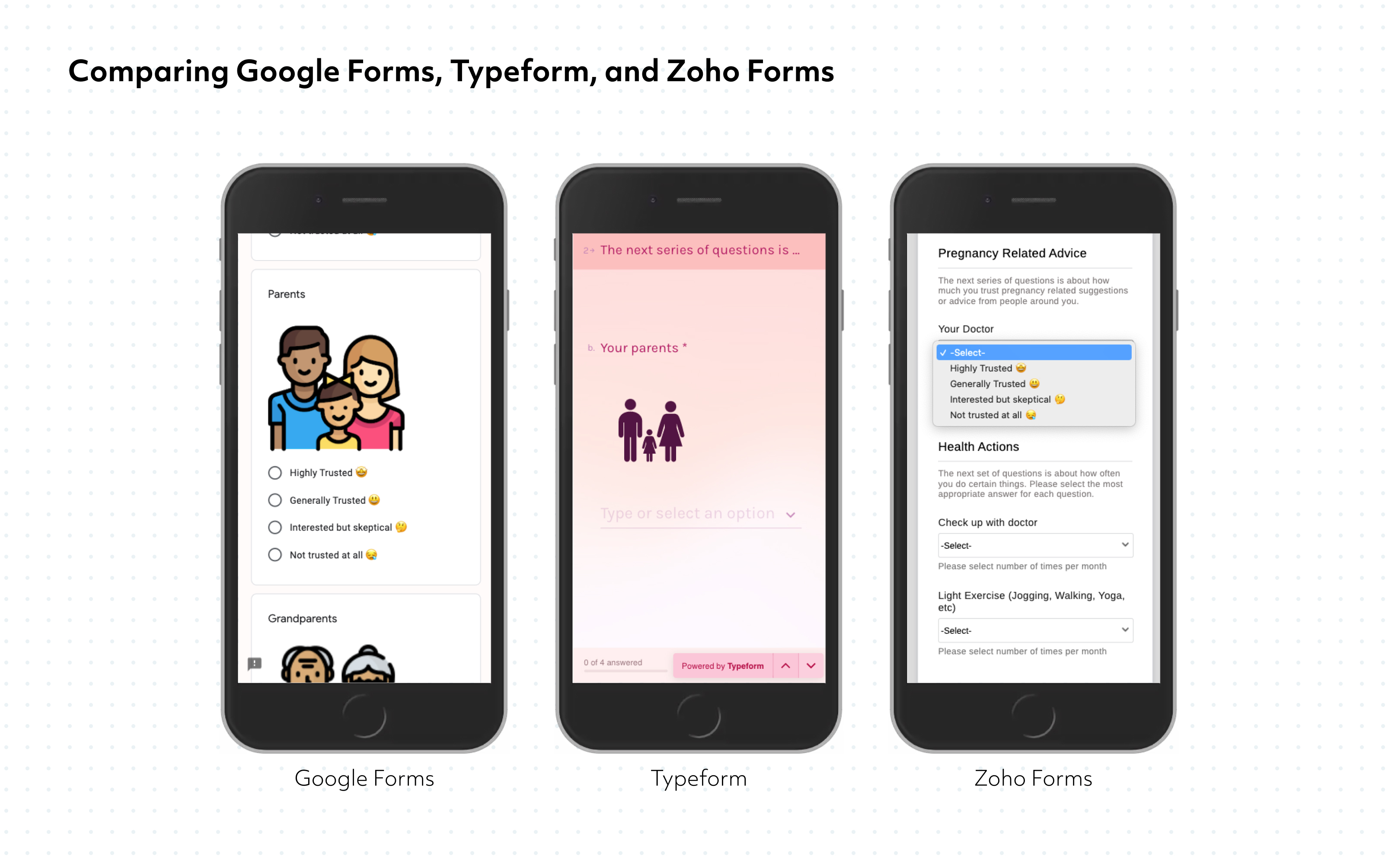
After testing different types of questions and comparing the user interface of the forms on mobile devices, we found that Typeform suited our needs and provided a seamless experience for the research participants. Here's an example of the card sort that we created for the final exercise.

For creating the diary study, we took a look at note-taking tools like Notes, Evernote, and Google Keep, of which we found Evernote's templates to be most suited to our needs. Some of our participants were also already using the Evernote app for their personal use, which we saw as a positive.
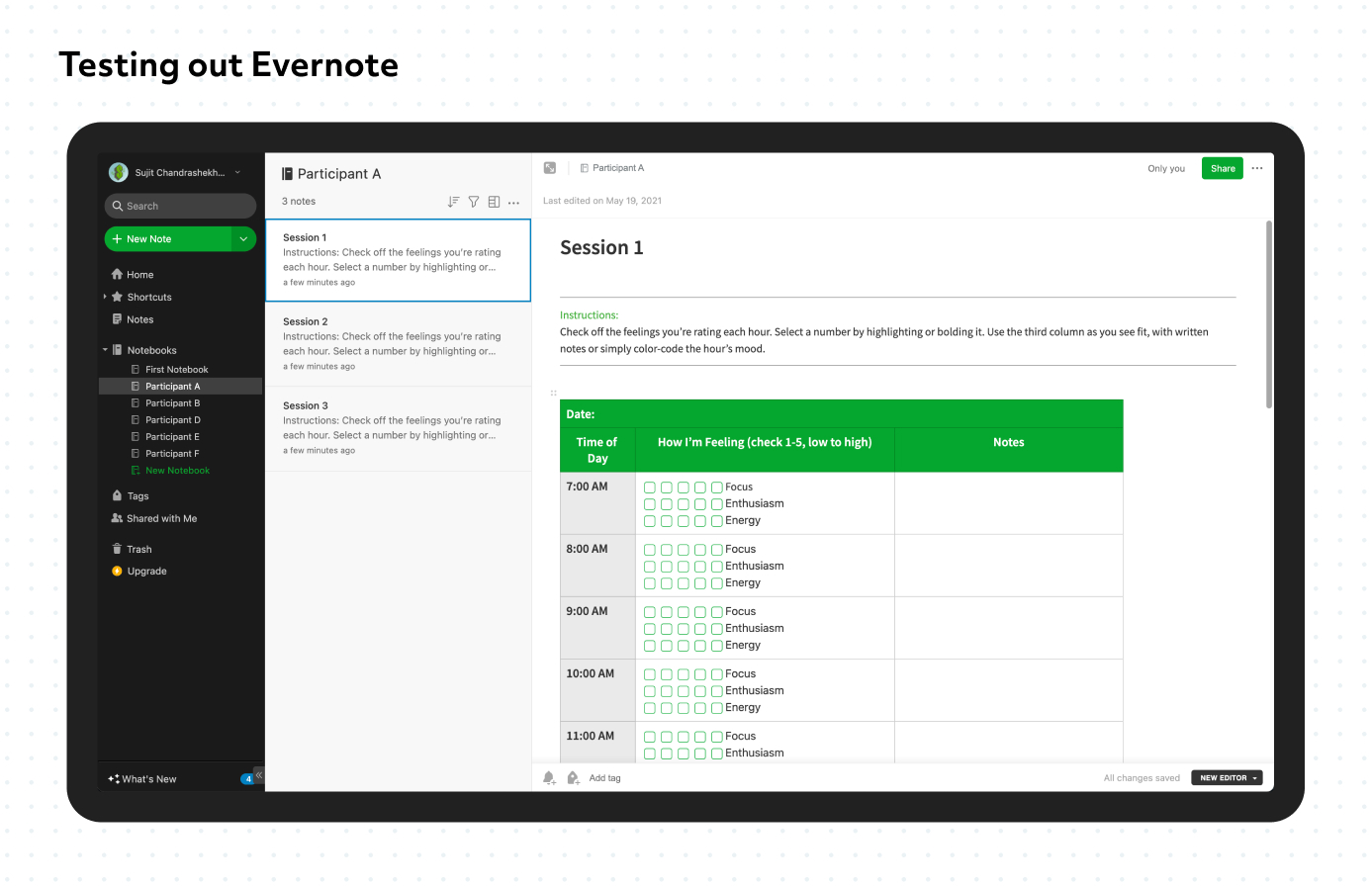
However, Evernote did not allow us to share notebooks with other users. Also since we learnt from
the recruiter that some participants were not comfortable installing new apps on their devices,
we started exploring alternatives that were already available on our participants' devices, like
texting.
The research app Indeemo was also seen as an option when we were testing Evernote, but since it too
required that users install a new app, we did not explore it further.
We decided to create a diary experience using text messaging, where we gave the research
participants daily prompts, and asked them to respond with photos and descriptions. On the research
team's side, we masked my phone number using a Google Voice number, and received the
participants' text messages and images directly on our computers. This streamlined the process of
downloading the images and organizing the responses. It also made it much faster to
share the responses with the rest of the research team.
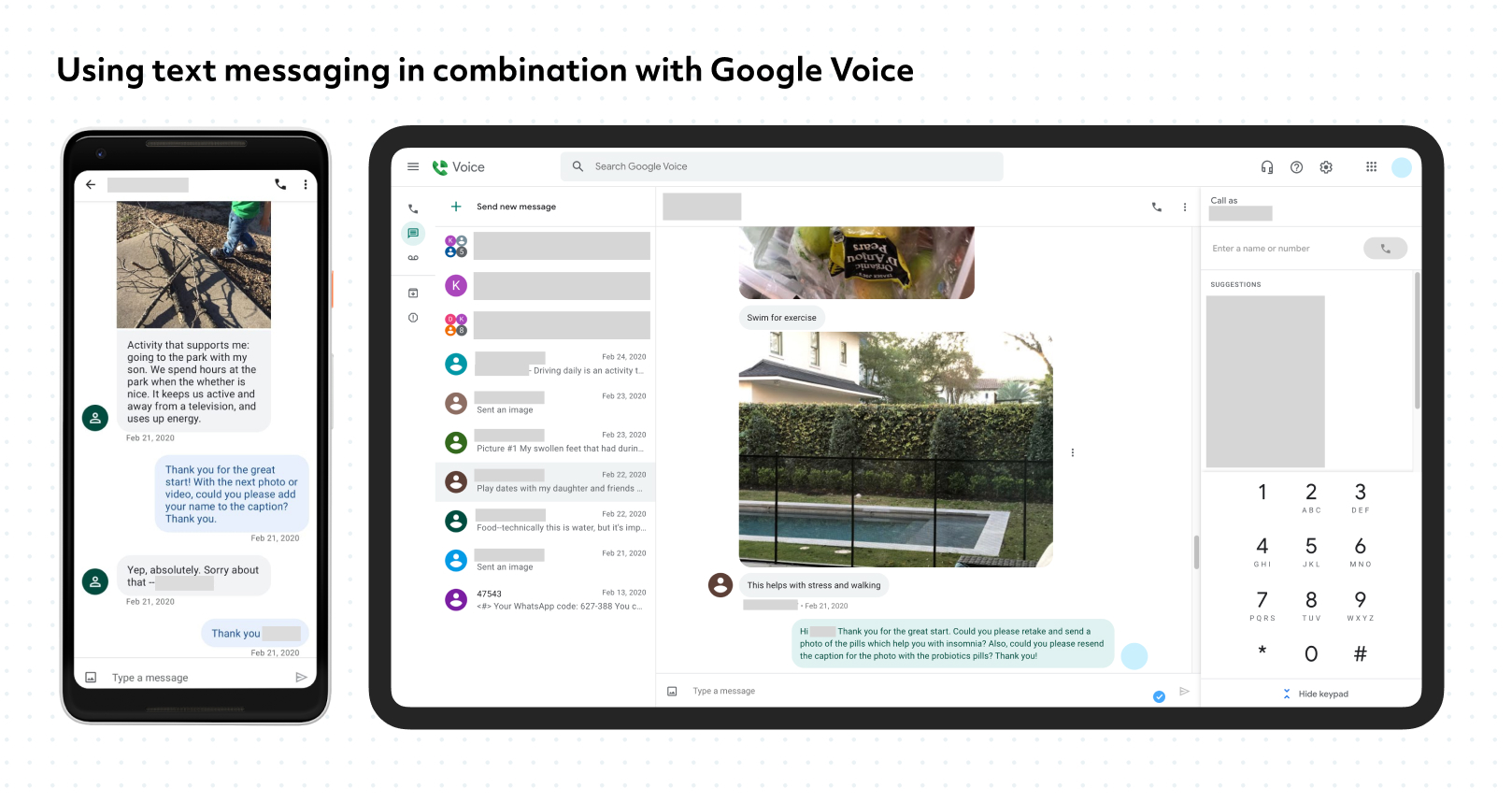
The remote research study was planned for a total of 3 days, during which we asked them to
The questions were updated daily on a Google Sites webpage that we used as a bulletin board for
participants to come to every day and get
links and prompts for the day's exercises and survey.
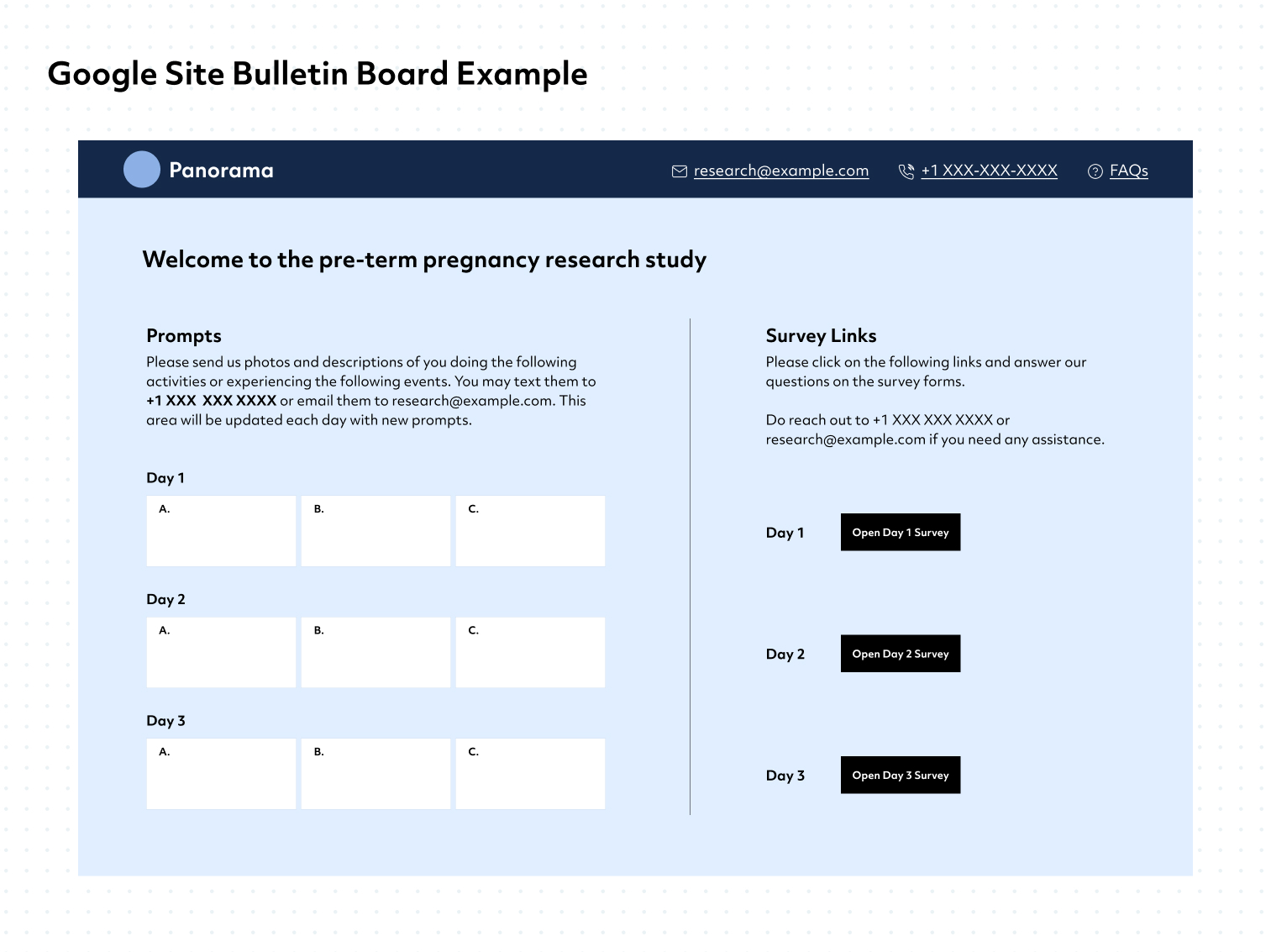
The final set of tools we used for this remote research project were:
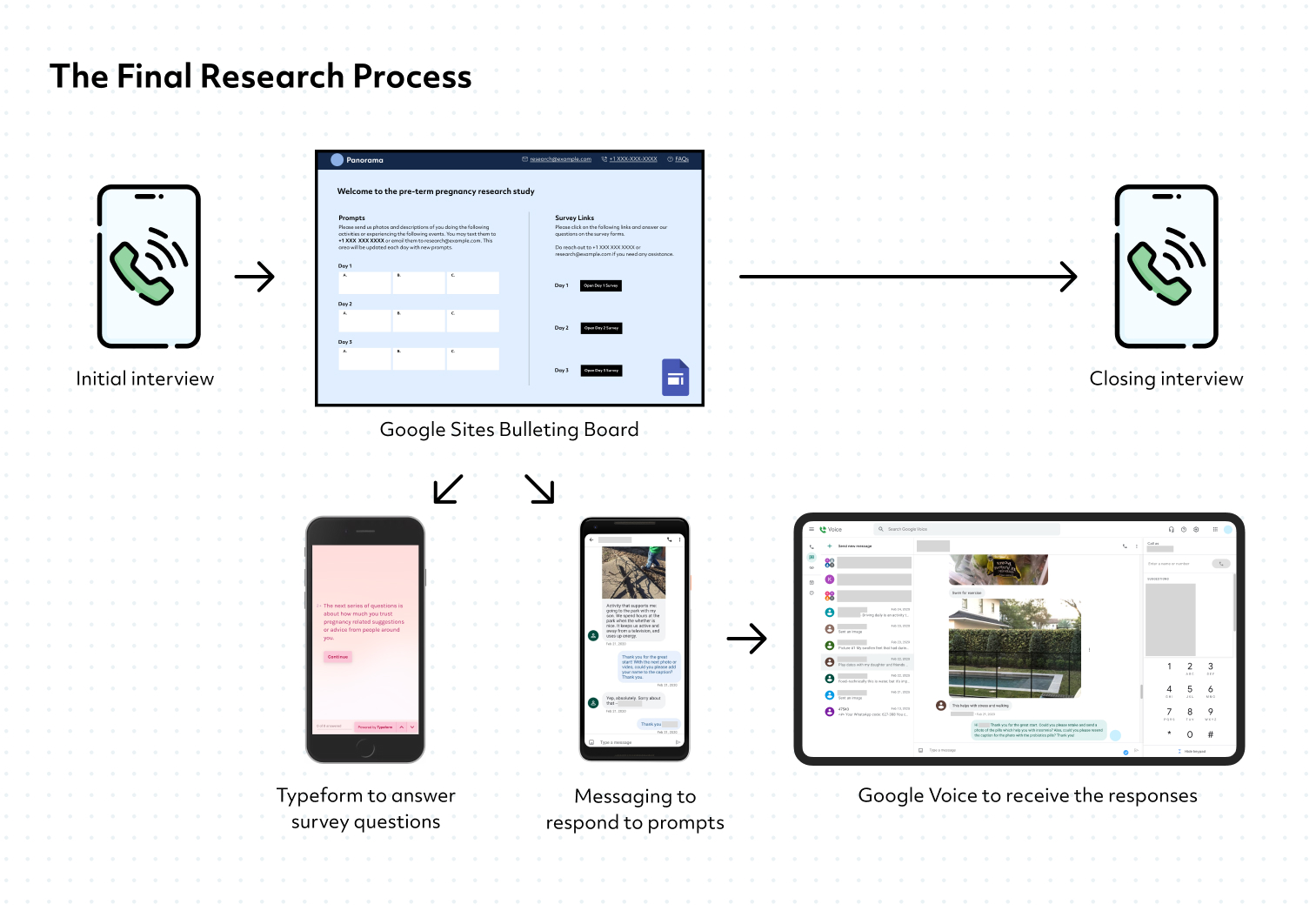
The research exercise was a success, and we received a lot of high quality data from both online and
offline parts of the study. Our clients appreciated the amount of effort and attention to
detail we
had put in, especially for the online remote studies.
We presented insights from the study and opportunity areas for future interventions in this space
to prevent pre-term deliveries, and handed
over the project data to the client.